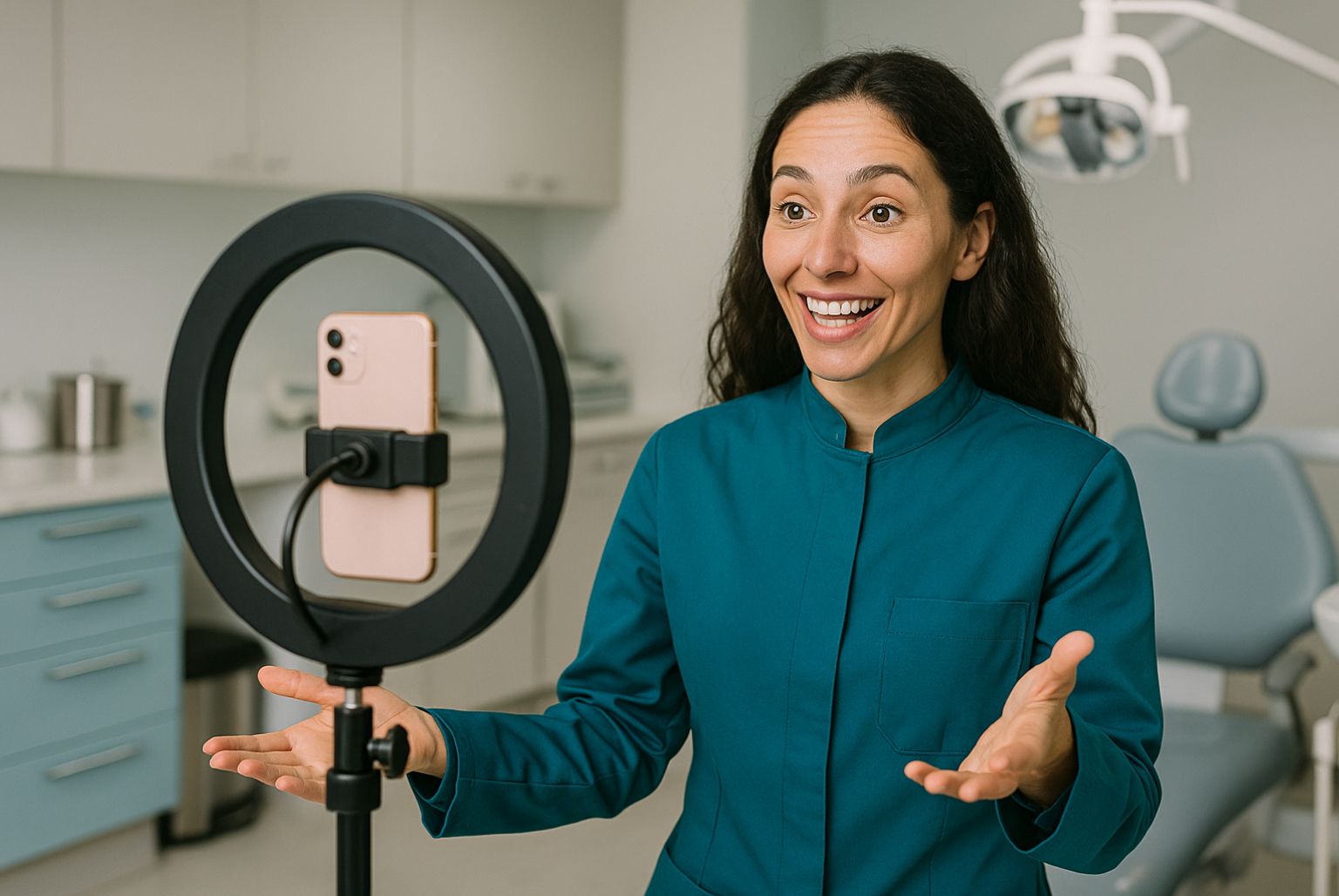How proactive are you about encouraging patients to review your clinic? If you do use reviews – and more about why you should below – have you ever been thrown by a bad review? Is the fear of receiving a bad review holding you back from asking patients to leave their comments?
In this week’s blog, we’ll be taking a look at the power of online reviews, their benefits and their limitations, and how to deal with a bad review if you get one.
Online reviews in 2016
Each year, a company called BrightLocal conducts its Local Customer Review Survey into how customers read and use online reviews. The key takeaways from the 2016 survey included some eye-opening stats about the importance of reviews:
- 84% of people trust online reviews as much as a personal recommendation
- 7 out of 10 consumers will leave a review for a business if they’re asked to
- 90% of consumers read less than 10 reviews before forming an opinion about a business
- 54% of people will visit the website after reading positive reviews
- 73% of consumers think that reviews older than three months are no longer relevant
- 74% of consumers say that positive reviews make them trust a local business more
- 58% of consumers say that the star rating of a business is most important
As we can see from those stats, online reviews hold a significant amount of sway with customers, heavily influencing the buying decision. The same study found that 45% of people believe that ‘Reputation’ – as indicated by positive reviews – is important to medical and healthcare businesses; in fact, this sector came second only to restaurants in terms of the importance of reputation.
The benefits of reviews
As we have seen, reviews have many benefits. They are seen as a form of social proof – evidence that other people have used your services and treatments and have not regretted it. This endorsement from others helps potential patients overcome any fears they may have about making a wrong decision about their treatment.
Reviews can also help you understand your patients’ priorities – what do they mention in a positive review? What made the experience good for them? Knowing what patients choose to highlight gives you powerful insights for your future marketing.
Online reviews can also boost your rankings on Google. According to MOZ’s Local Search Ranking Factors Survey in 2015, various elements of online reviews are thought to make up approximately 8.4% of the ranking factors Google uses to place a web page in search results – this makes online reviews the fifth most important search-engine ranking factor.
Listings with high-star reviews also tend to attract higher clickthrough rates because they stand out visually in SERPs and act as an immediate vote of confidence.
Where can you get reviews?
Returning to the BrightLocal stats above, seven out of 10 consumers will leave a review for a business if they’re asked to. This means that one of the most effective ways to attract online reviews is to ask for them. Reviews can also come in via Google, Facebook and third party review sites.
One way to maximise the impact of your reviews is to have them feeding into your website and linking them to specific treatments, where possible.
The psychology of bad reviews
Although you pour your heart and soul into your clinic, the harsh reality is that you may receive a bad review at some stage. In fact, the more visible your business becomes, the greater your chance of receiving a dreaded one- or two-star review.
There are lots of reasons why people leave bad reviews. As humans, we’re often inclined to share negative experiences over positive ones. According to stats from LifeLearn.com, 23% of customers admit to having posted a negative review out of anger or vengeance. For the vast majority, however, negative reviews are not personal, they are just about being heard. Seventy percent of people say that they have made a complaint in the hope of receiving a response; in other words, they want to give you a chance to rectify the situation. Sadly, only 38% of businesses respond to negative reviews.
There have been cases where reviews have been unfairly slanted in one way or another. Businesses have written and posted their own fake positive reviews or people have even commissioned negative reviews and demanded a fee or discount to take them down. The Competition and Markets Authority (CMA) has pledged to clamp down on fake reviews of any kind.
How to deal with a bad review
Whether motivated by sabotage, unrealistic expectations or by an unsatisfactory customer experience, bad reviews are almost inevitable, but they don’t have to damage your business.
1. Keep calm
If and when you receive a bad review, it’s important not to panic. In all likelihood, the review isn’t meant as a personal attack.
Before you respond take some time to cool off and think the bad review through as dispassionately as possible. Were you aware of a problem when the patient came in for their treatment? Is there some aspect of your staff training that could be improved?
2. Be polite and professional
It’s important to be courteous and professional when responding to complaints. Although you may feel the complaint is unjust, a defensive or angry comeback from you will put your practice in a bad light, and could even result in the bad review and any less-than-professional response going viral.
3. Apologise
Although you may not feel that an apology is due, it can help to tell the reviewer that you are sorry they have been unhappy with their experience. This is a good time to add in something positive about your clinic and your mission, values or standards. You might say something like, “I’m sorry to hear that you were unhappy with your experience. At <your clinic name>, we aim to treat every patient with the same care and attention that we would give a member of our own family, so we apologise if you feel we failed to meet that standard on this occasion. We encourage patients to talk to us about any concerns so that we can do our best to make things better, find a solution or clear up any miscommunication”.
4. Move the follow-up conversation offline
We would recommend ending your response with something like, “If you would like to discuss your personal experience in more detail, please do give us a call on <phone number> or email the Practice Manager at <Insert email address>”.
The purpose of this sentence is to move the conversation about the complaint offline, so that the patient doesn’t add to the complaint and make it more visible to people reading your reviews.
They also get one-to-one attention that shows their complaint is being taken seriously.
5. Respond to every comment
A good customer service strategy is to respond to every review, whether good or bad, even if it’s just to say thank you to the reviewer for taking the time to come and leave their comments. If people can see that you value reviews and are engaged with your patients’ opinions, they will see your clinic more favourably in the event of a bad review.
6. Be transparent
Although your immediate reaction may be to ask the reviewer to delete their bad review, it can actually be a good PR exercise to be transparent, to receive a bad review with good grace, and show that you’re proactive about great customer service.
7. Cut off bad reviews with customer satisfaction surveys
As we’ve seen above, people tend to post a bad review when they want a response from a business about a negative experience. You can help your patients to feel heard before they get as far as posting a negative review by using customer satisfaction surveys within your clinic. This gives patients a chance to highlight negative experiences straightaway and for you to respond appropriately before the situation becomes public.
8. Encourage fresh reviews
As BrightLocal’s stats show, people like to read approximately 10 reviews before they make a purchase or book an appointment. The good news is that, according to one study by Yale School of Management, the occasional low-star review doesn’t cause too much damage. People are wary of nothing but five-star reviews because it sounds too good to be true, and understand that one-star reviews tend to reflect an extreme situation. Because, as consumers, we also recognise that everyone has different perceptions of what makes a star rating, we tend to look more to the three- and four-star reviews for a more balanced opinion about a business. This means that a one-star review shouldn’t be too damaging overall.
That being said, the best way to downplay a bad review is to drown it in a sea of good reviews. Ideally, you want to push a bad review down the page rather than letting it linger at the top to be seen before any other testimonial.
Bad reviews can be difficult to manage, emotionally as much as practically, but they often present an opportunity to provide a good customer experience and turn a bad situation on its head.
Need help attracting reviews, managing a bad review or knowing how to use reviews to boost your marketing? Give us a call on Cosmetic Digital on 0115 9140 640 to see how we can help.




